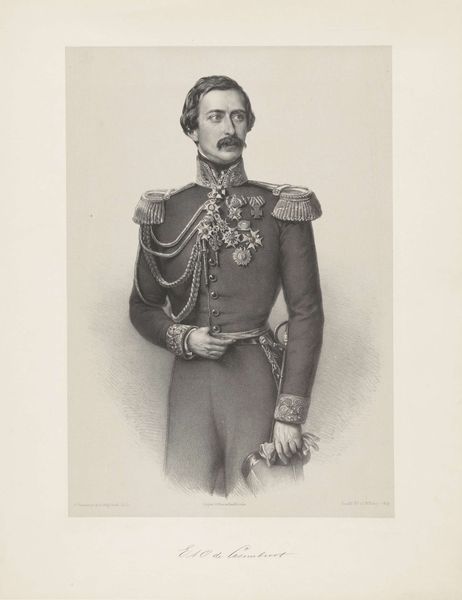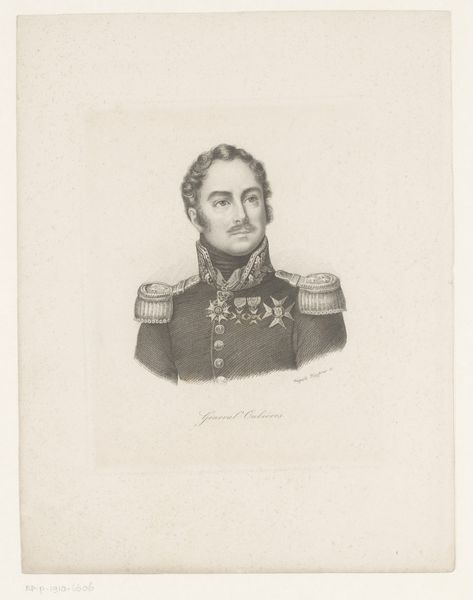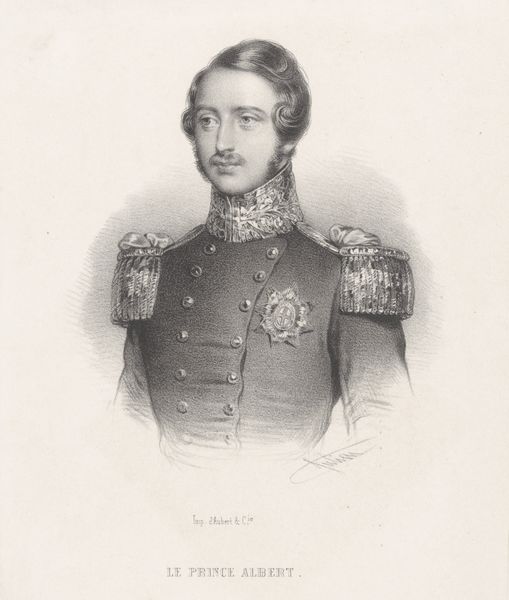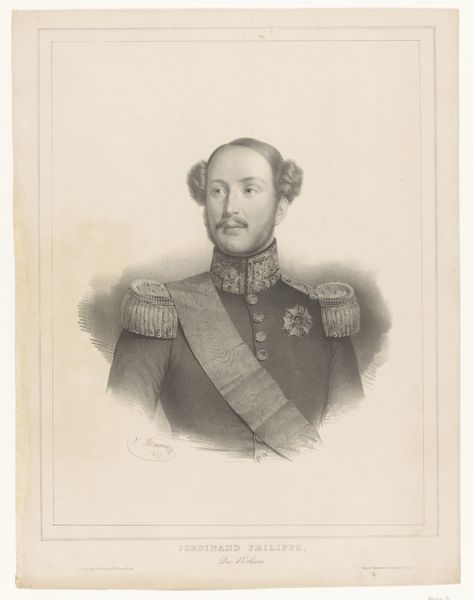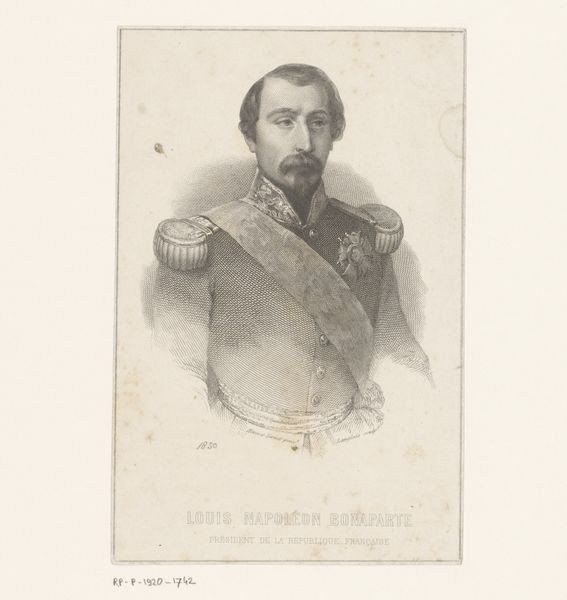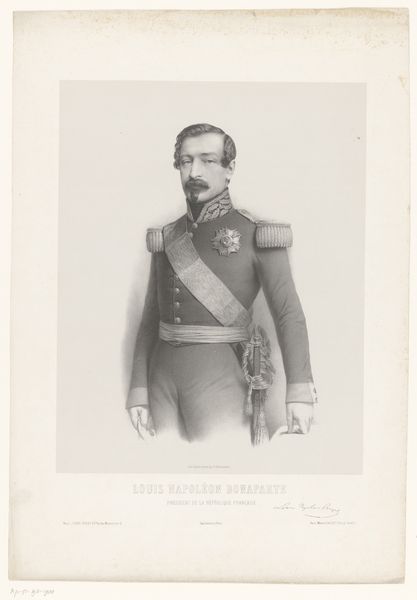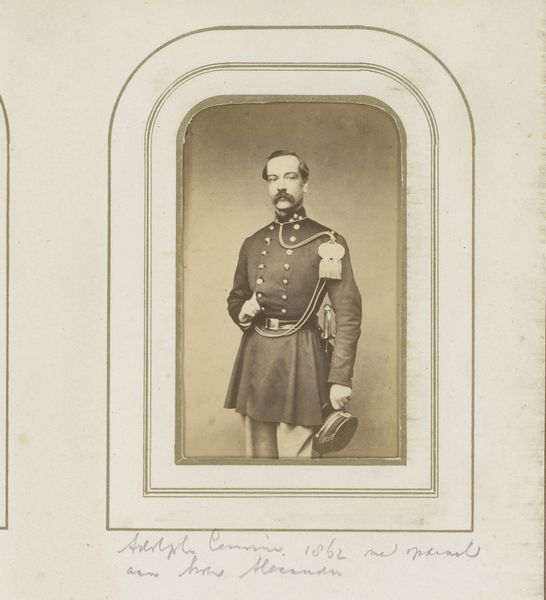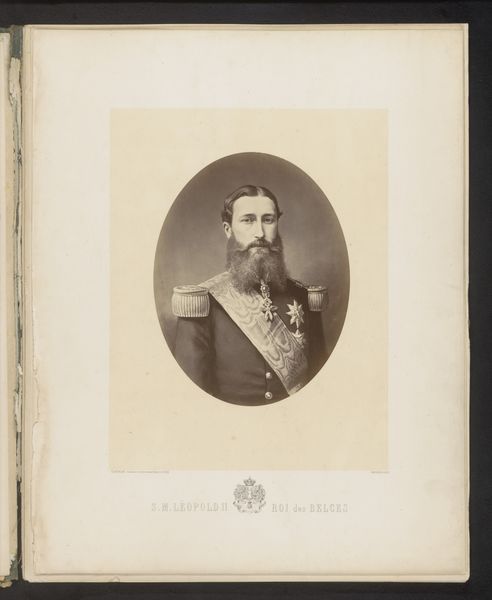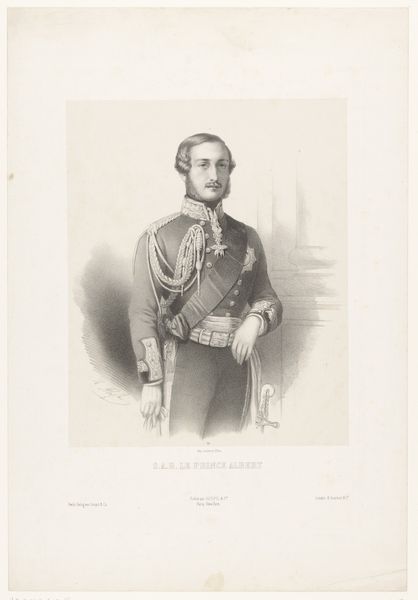
print, engraving
#
portrait
# print
#
romanticism
#
19th century
#
history-painting
#
engraving
Dimensions: height 496 mm, width 361 mm
Copyright: Rijks Museum: Open Domain
This is a lithograph of Prince Albert by C. Steckmest. As the husband of Queen Victoria, Prince Albert was a key figure in the British monarchy during the 19th century, a period defined by the expansion of the British Empire and rigid social stratification. Here, Prince Albert is depicted in his military uniform, complete with medals and decorations, reflecting the importance of the monarchy's image and the display of power. Yet, portraiture was also used to humanize the monarchy, conveying particular virtues and characteristics. Consider the expectations of masculinity during the Victorian era, which emphasized duty, stoicism, and respectability. How are these qualities conveyed in this image of Prince Albert? The softness of the lithograph creates a feeling of being in the presence of this man who shaped British identity. How does this depiction of Prince Albert reinforce or challenge these social norms, and what does it tell us about the role of portraiture in shaping public perception?
Comments
No comments
Be the first to comment and join the conversation on the ultimate creative platform.
